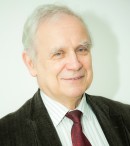

Plenary Lecture
Energy Efficiency of Eastern European Residential Buildings

Professor Teet-Andrus Koiv
Head of Chair of heating and ventilation
Department of Envirobmental Engineering
Faculty of Civil Engineering
Tallinn University of Technology
Estonia
E-mail: teet.koiv@ttu.ee
Abstract: EU Directives have set strict requirements for buildings energy use and energy conservation.
It should be noted that residential buildings make up the largest share of buildings. At the same time, Eastern European residential buildings structure differs significantly from that of Western Europe. In Eastern Europe the apartment buildings form the largest part of the existing buildings. Of these, more than 80% built before 1990s years. At this time, however, energy prices were nearly 10 times lower than those of today. This led to the construction of buildings, which heat transmittance of envelope elements was very modest U-value of external walls ~1, windows, ~ 3 W/(m2K). Engineering systems of these residential buildings were primitive: poorly functioning natural ventilation, 1-pipe heating systems without thermostats and its connection to district heating network by jet pumps-elevators.
This factor considerably affected the energy efficiency of buildings. That period was characterized by low prices of heat energy and fuels and public utility services. Owing to that the saving measures applied often failed to be profitable.
In my report I will give a short review of the condition of buildings and energy efficiency the example of Estonia.
The 1990s saw the beginning of the renovation of heat substations, heating and ventilation systems and building envelopes. The present situation witnesses the renovation of envelopes (incl. windows) and heating systems in old apartment buildings. The renovation of windows in old apartment buildings was accompanied by problems in the indoor climate.
The report gives a review of indoor climate in apartment buildings.
One important issue for the old apartment buildings to improve indoor climate and energy efficiency of increasing is the successful renovation of the ventilation. In this field is beginning to use exhaust air heat pump-based solutions, as well as apartment and room based air handling units (AHU). The report contains the results of the investigation of DHW consumption in different kinds of buildings and shows the determination of design flow rates on the basis of actual consumption. Characterised is the influence of the new calculation method on the determination on the equipment of heat substations and district heating network.
The share of the TUT in improving energy efficiency in Estonia: working out methods of energy auditing and energy certification, training of energy auditors, investigation of the durability of concrete panel and brick apartment buildings, indoor climate and renovation possibilities in that kind of buildings, launching of the international master program “Energy Efficiency of Buildings”, creation of the laboratory “Indoor Climate and Energy”, launching of the investigation of low-energy-consumption buildings.
Brief Biography of the Speaker: T.-A.Koiv received his M.Sc. in Thermal Engineering from the Tallinn University of Technology and the PhD at the Institute of Civil Engineering of St Petersburg in Heating, Heat Supply, Ventilation and Air Conditioning in 1978. Since 2003 he has been Full Professor and Head of the Chair of Heating and Ventilation at the Tallinn University of Technology, Estonia. He has read several courses in the field of Thermal Engineering, Heat Supply, Heating, Ventilation and Air Conditioning, Renovation of HVAC systems at the Tallinn University of Technology. At present he supervises 6 PhD students. Prof T.-A.Koiv has 18 inventions and patents in the field of Heating and Heat Supply. He is an active researcher in the field of energy efficiency, indoor climate and building service systems. He is the author of the 10 book and textbooks. Dr. Koiv has published more than 100 papers in books, journals and conference proceedings. Prof. Koiv has received an award of Silver medal for his inventive activities at the Exhibition of the Achievements of National Economy. He is vice dean (in the field of science) of the Civil Engineering Faculty of the Tallinn University of Technology and head of several projects (Baltic cooperation in energy efficiency and feasibility in urban planning – ENEF, Decreasing the consumption of heat energy by awareness rising and performance of consumers based on measurements of individual heating costs, Minimum requirements for energy performance - additional analysis, new international master program “Energy Efficiency of Buildings”, Energy Auditing and Certification of Buildings, Doctoral School of Civil and Environmental Engineering). He is a member of CBI. He has been reviewer of Journals and member of Scientific Committee of Conferences.